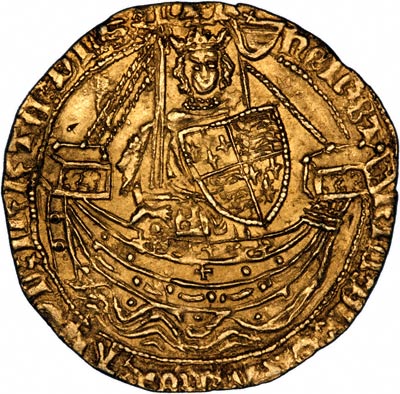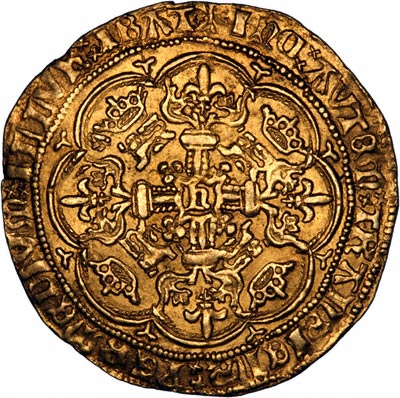
|
Counterfeit Henry VI Gold Noble We came across this recently whilst sorting through some stock. Initially, it appeared to be a gold Noble of Henry VI, however our suspicions were raised by the light-weight (89 grains compared to 108 grains) and the fact that the details on the coin did not match any known types. Accordingly, we sent some high resolution photographs to the Coin and Medal Department at the British Museum, and the reply we got back confirmed our suspicion that it was a fake, but probably a contemporary one. "The image you sent is certainly not of an official noble of Henry VI and does not really look like the standard Flemish nobles, which are pretty well made and form a distinct series. There are some very odd details: on the back a reversed S in TRANSIENS, the spelling of the usual ILLORV as ILLVR; the leopards all being three-legged with a strange detached lump by the heads, as though the engraver has misunderstood the raised fourth leg. On the obverse again the style of design is poor and the spelling goes awry at several places (hENRIC as hENBT/RIC; FRANC as FRTC - though it also looks like RR rather than FR). There are 4 fleurs in the quarters of the king's shield, not the usual three and two lines of mail around the king's neck instead of three, and so on. I'd say it is a 15th century conterfeit of uncertain origin - probably not Flemish though. Unlike a modern fake, made to fool collectors, a contemporary counterfeit is an interesting numismatic artifact in its own right, as they were made with the intention of circulating as currency. If this is indeed a contemporary counterfeit, the person who made it could have expected an extremely gruesome fate if he or she had ever been caught, even by the standards of the day, as 'coining' was considered to be a form of high treason, and therefore even more serious than murder! At the time, England was undergoing a period of extreme turmoil. As well as war in France, England was suffering a civil war as the Lancaster and York dynasties struggled for control of the English Crown. In the midst of this chaos, a 'coiner' may have been taking advantage of the chaos either to survive or profit from the situation. Given the circumstances, it is even possible that shadowy figures close to either of the rival claimants were producing these coins as a clandestine way of funding their war machines to fight the other side. Our thanks go to Dr B Cook of the British Museum. If you are ever in the area, we owe you a pint.
Postage & Packing
|

Obverse of Counterfeit Gold Noble
|
